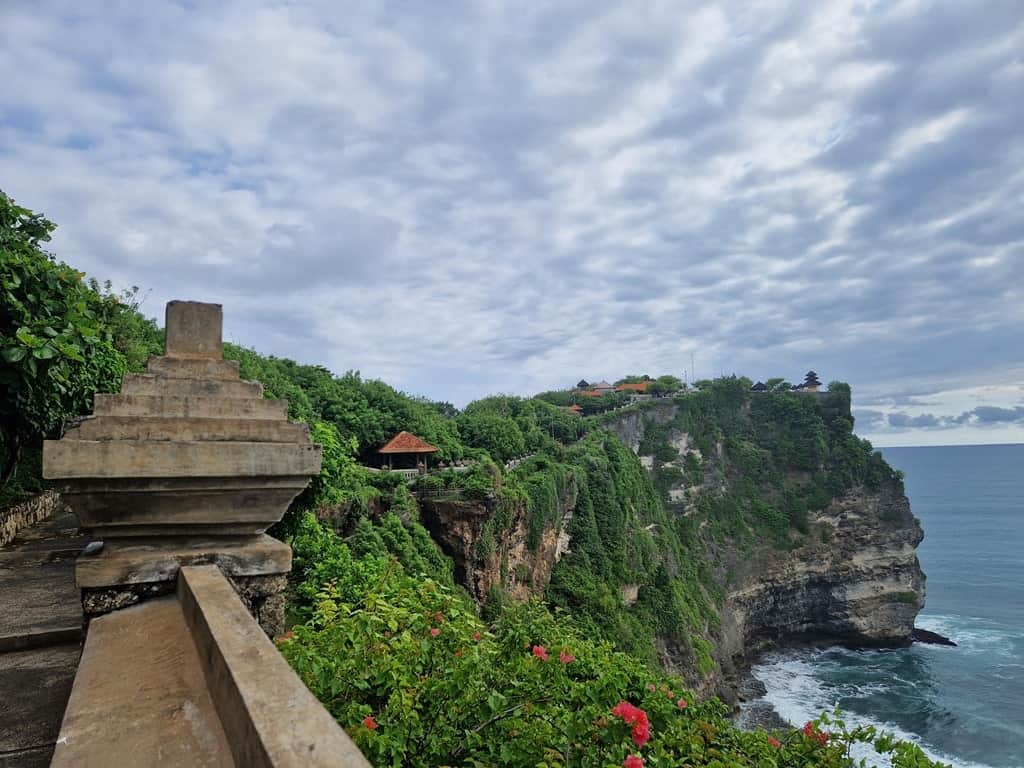No other temple in Bali is quite as iconic as Uluwatu. This place seemingly has it all: it’s got the stellar clifftop location that’s perfect for sunset; it’s a venue for the famed Kecak dance; and it’s got unique architecture. Visiting here means spending time soaking up the dramatic coastline of Bali as well as getting a better understanding of the religious and cultural heritage of this Indonesian island.
Disclaimer: This post contains affiliate links. This means that should you click on certain links and then subsequently purchase a product, I will receive a small commission.
Table of Contents
Visiting Uluwatu Temple in Bali
History and features of Uluwatu Temple in Bali
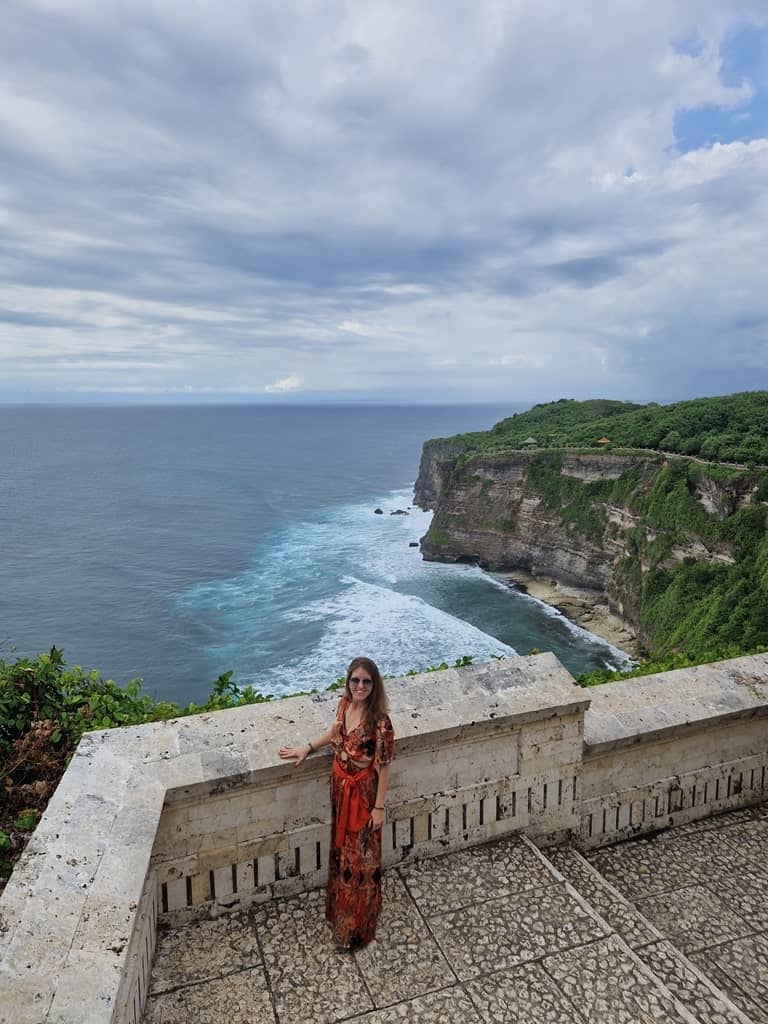
Uluwatu Temple, also known as Pura Luhur Uluwatu, is one of the most important temples in Balinese Hinduism. As well as being one of the island’s pura segara (or “sea temples”), it is also one of the Sad Kahyangan Jagat, the six most important “sanctuaries” or temples on the island of Bali.
Sat on a clifftop 70 meters above the sea, the temple enshrines the deity Sang Gyang Widhi Wasa, also known as Achintya (the supreme god in Balinese Hinduism), this time in the form of Rudra. Rudra is associated with storms and medicine.
Tradition holds that the temple is very ancient indeed, with a religious structure possibly having been located on this spot before the 11th century. However, it was at this time that Uluwatu as it looks now began to take shape, with significant work being carried out by Empu Kuturan, a Javanese Hindu sage.
Uluwatu is also considered one of the padmasana shrines, a system that was inaugurated by the Majapahit priest Dang Hyang Nirartha (also known as Dang Hyang Dwijendra) in the 16th century. These temples were set up at intervals around the island in order to honor the gods of the sea and therefore protect it from any outside danger.
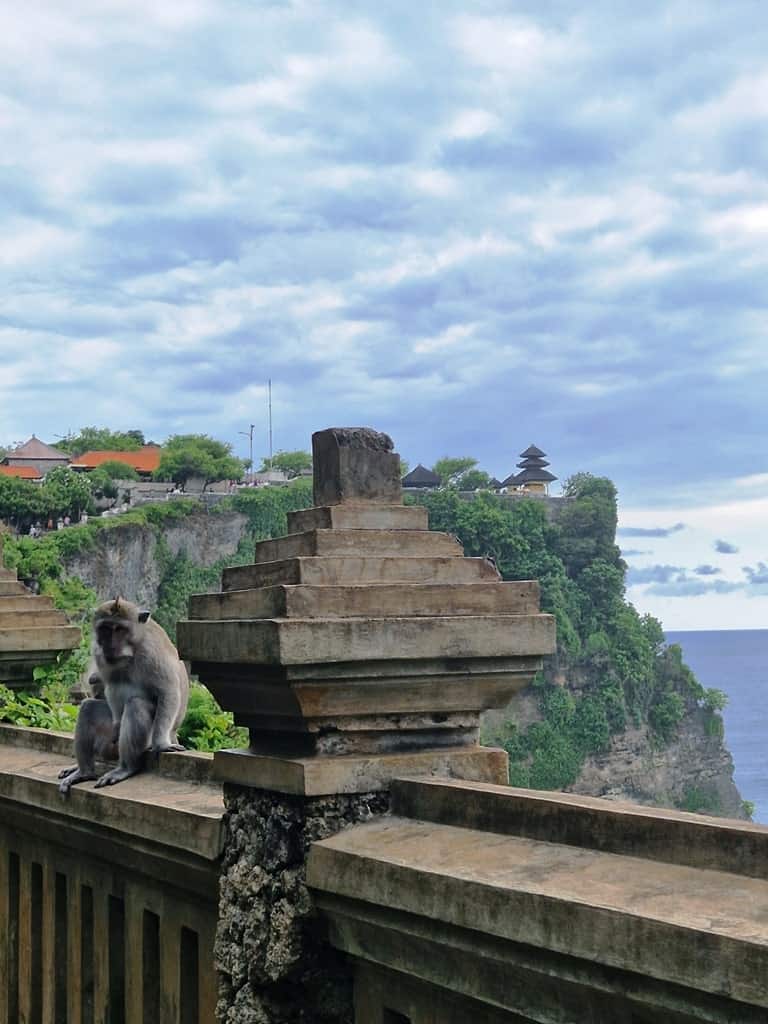
Its iconic setting overlooking the sea is one of the main features of the temple; ulu means “tip” and watu means “rock”. When visiting this magnificent temple, you’ll probably first be greeted by the notorious Balinese macaques who live in the jungles surrounding the cliffs. These gangs of monkeys are said to protect the temple grounds against any malevolent forces, but they themselves can wreak havoc, stealing people’s possessions and grabbing food.
Carry on along the pathway toward the temple and you’ll be greeted by picturesque views of the crashing waves beyond the temple and its thatched meru pagodas.
Interested in visiting the Uluwatu Temple on a guided tour? I recommend the following:
– Bali Sunset: Uluwatu Temple, Kecak Dance and Jimbaran Bay
– Bali: South Coast Uluwatu, Tanah Lot, and Jimbaran Day Trip
What to see and do at Uluwatu Temple
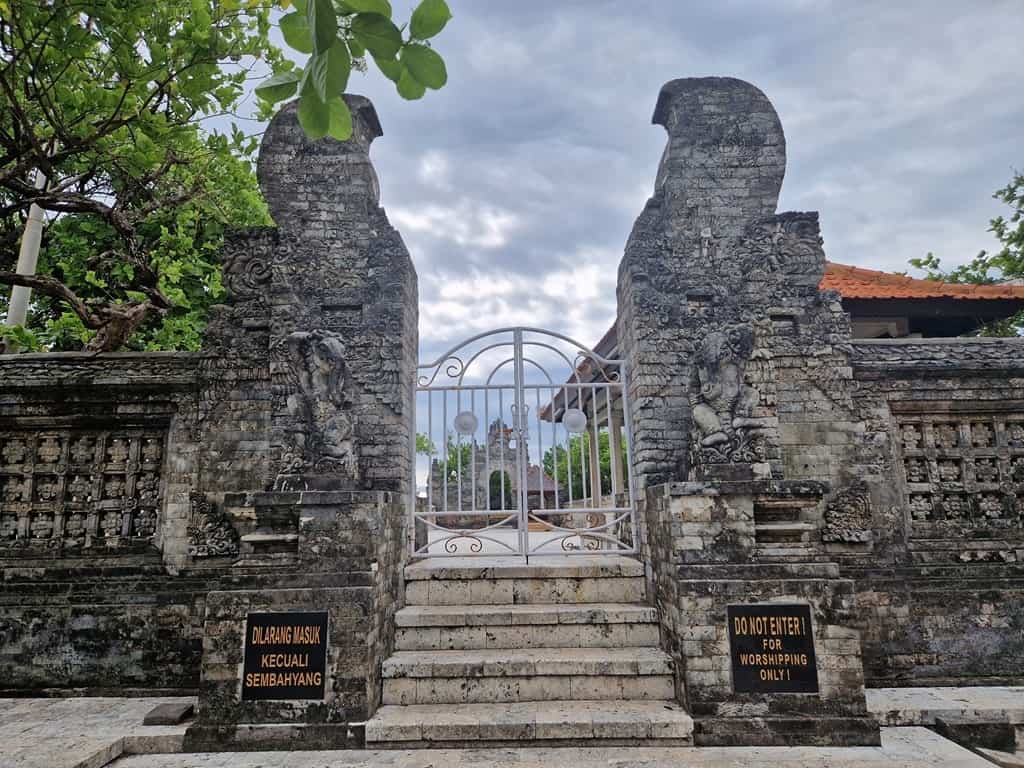
Entranceways
The temple has two main entrances through which visitors can enter, one in the south and one in the north. The gates (unusual because they are not the normal candi bentar split gateways) are guarded by statues of Ganesh carved out of volcanic stone. Other sculptural reliefs on the entrance gates show intricate patterns of flowers, welcoming visitors into the inner sanctum of the temple.
Main shrine
The main shrine of Uluwatu Temple looks out over the sea. Enter through the gateways and you’ll find yourself within an enclosed courtyard that features walls of coral. The main shrine itself is only open for Hindu worshippers to enter, but you can glimpse the structure — including the Meru tower — from the grounds on which you now stand.
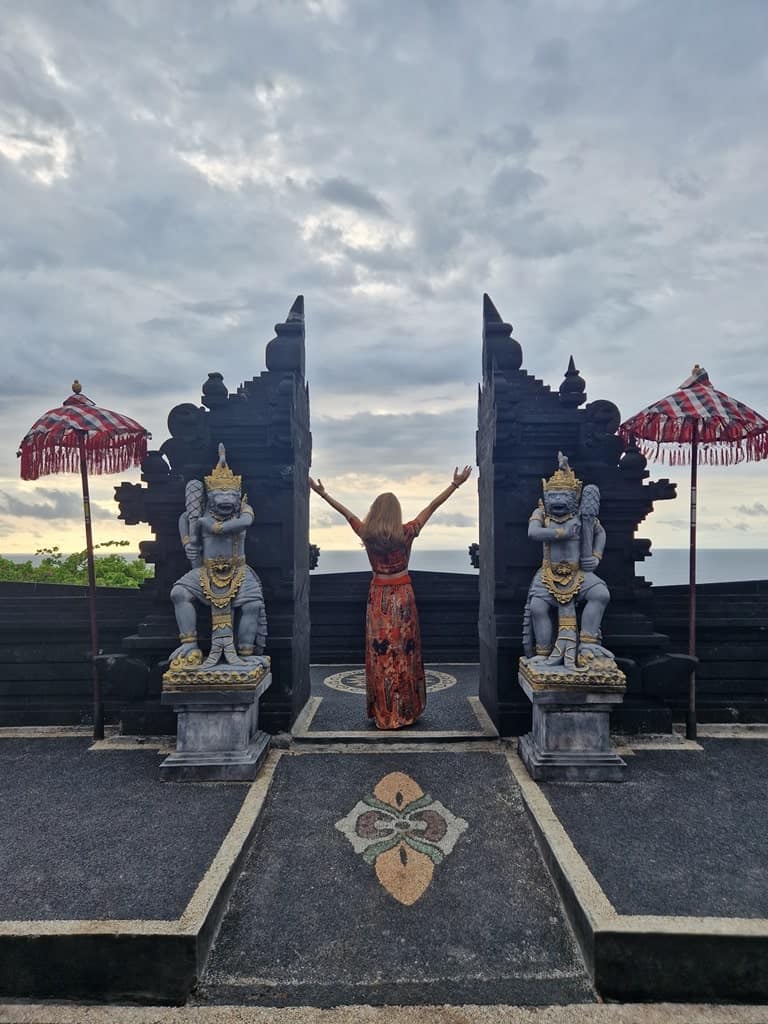
Brahmin statue
Behind the main shrine, but still within the inner courtyard area, is the Brahmin statue. This is believed by many to be a depiction of Dang Hyang Nirartha. It was here that the holy priest, who had traveled from Eastern Java, is said to have found enlightenment at the end of his spiritual quest. According to legend, it is believed that he was struck by lightning at this moment and then disappeared.
Kecak dance at Uluwatu Temple
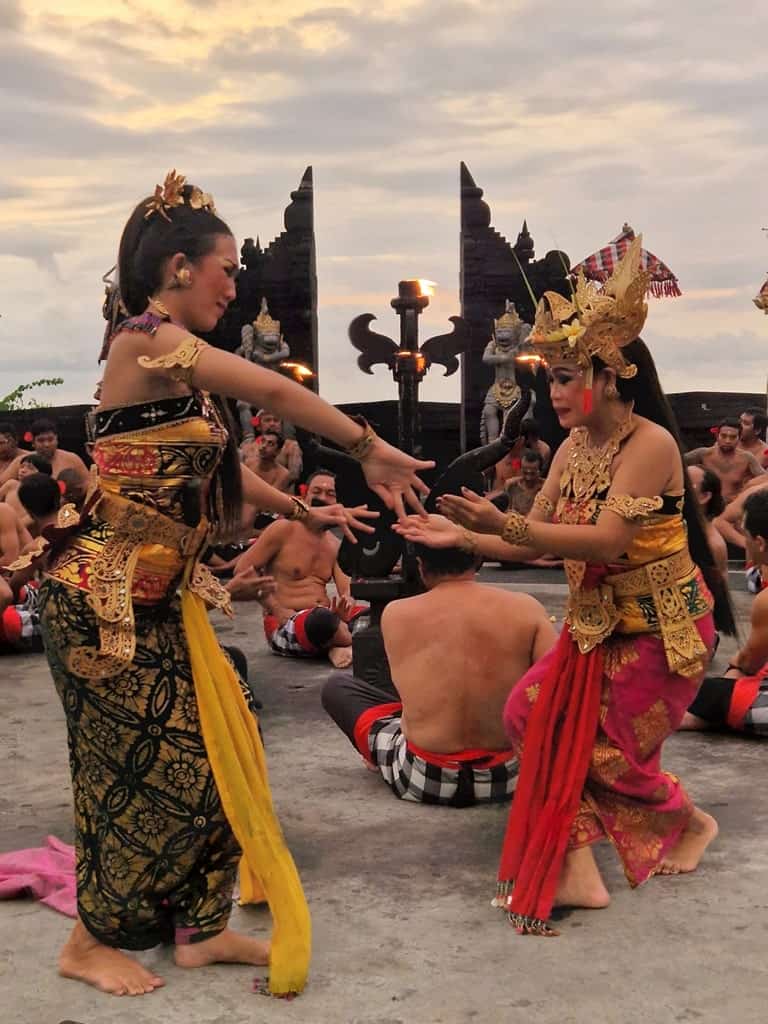
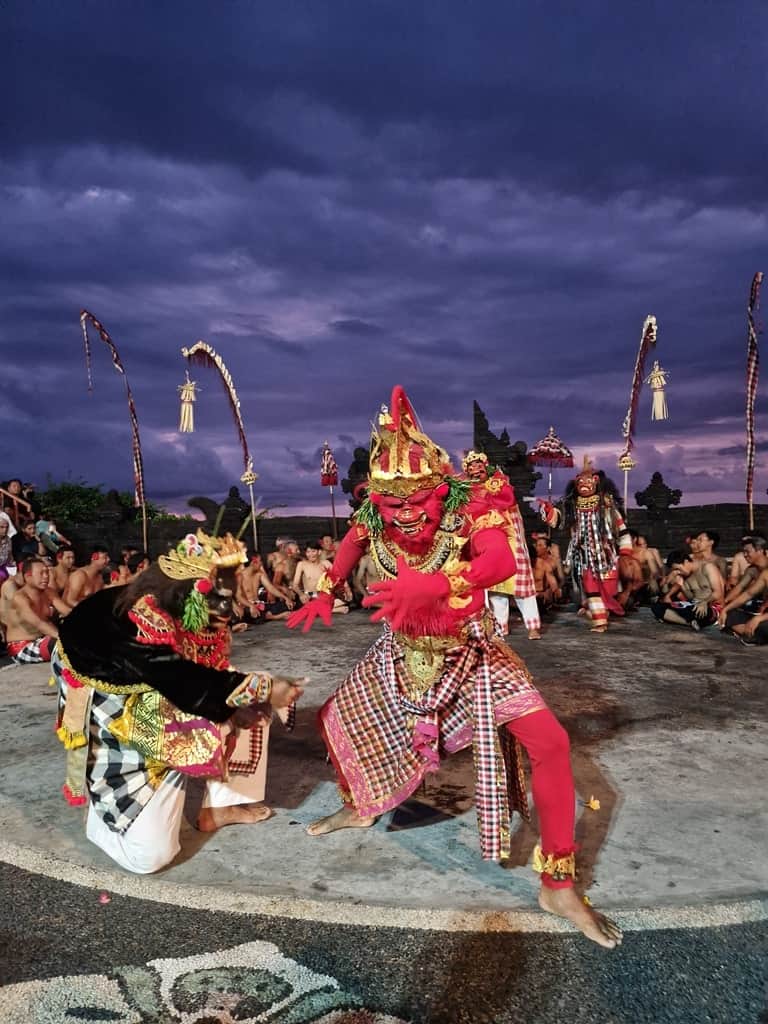
Many people make their way to Uluwatu Temple, not for the temple itself, but for the very popular version of the Kecak dance that is performed here. There’s a special amphitheater located here where the dance is performed. The Kecak dance is a combination of two traditions of Bali: namely the Hindu epic of the Ramayana, and indigenous dance and music.
The dramatic show takes place with crowds encircling the central fire, with a troop of around 100 dancers filling the stage as the sun begins to set. Shows start anywhere between 6 p.m. and 7 p.m. and is one of the most iconic spots to see a Kecak dance in Bali.
Sunset at Uluwatu Temple
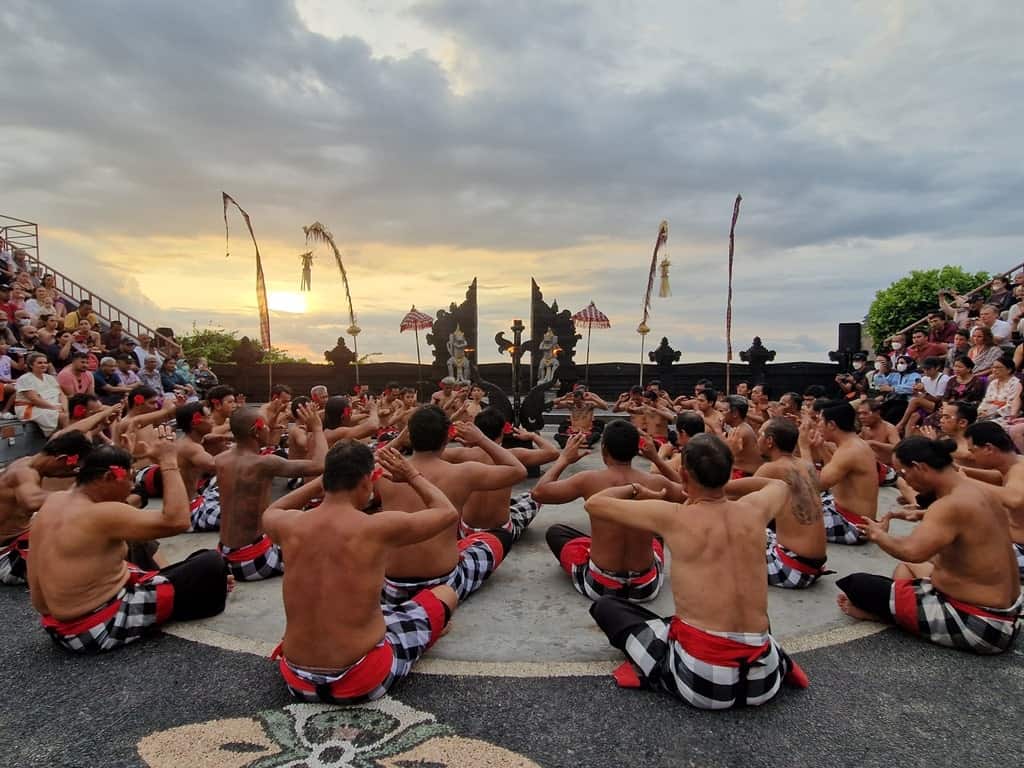
You don’t have to see a Kecak dance in order to soak up the spectacular sunset of Bali. If you want to get away from the crowds somewhat, head south of the temple (that is to your left) around the rocky coastline, where you can get an amazing view of the sunset from this high vantage point.
Practical information for visiting Uluwatu Temple in Bali
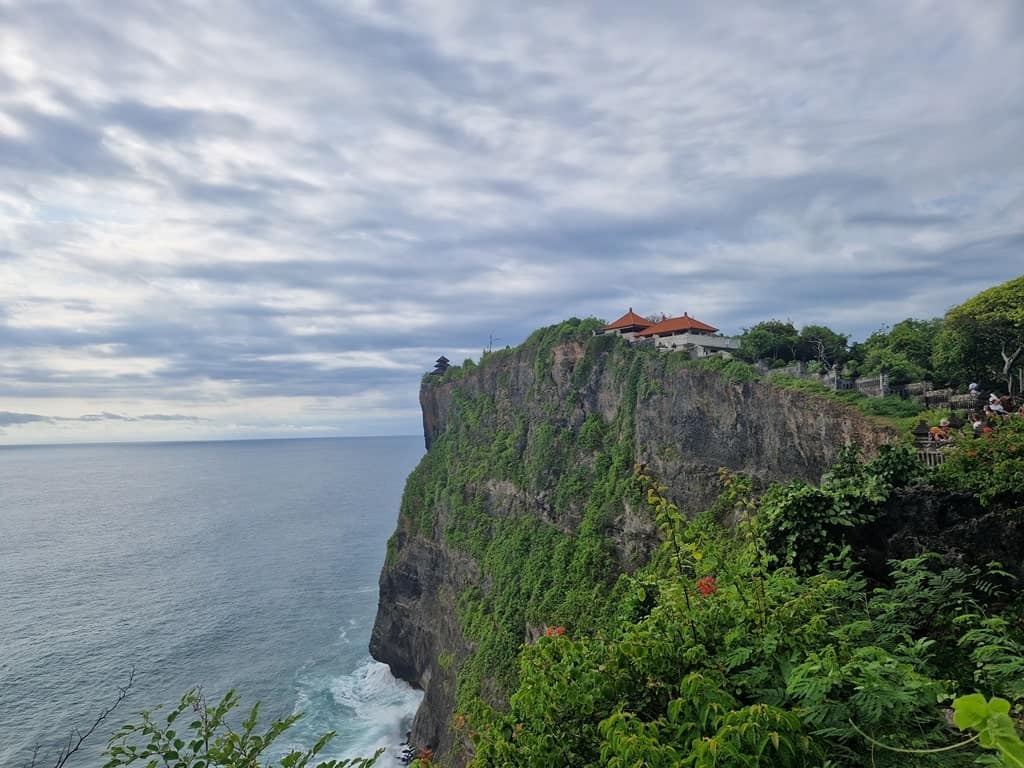
What to wear in the Uluwatu Temple
When visiting Uluwatu Temple you need to remember that this is a place of worship. That means you need to be respectful of the religious sensitivities here. Visitors to the temple should cover up by wearing something that covers their shoulders and upper arms; your legs also need to be covered. If you arrive without this sort of clothing, you will be given a sarong to wear around your lower to cover up.
Where is Uluwatu Temple (and how to get there)
You will find Uluwatu Temple in the region of Pecatu in South Kuta, which is part of the Badung Regency of Bali. It’s around an hour and 43-minute drive from Ubud, while if you’re travelling from Seminyak it will take around 50 minutes by car.
There’s actually no public transport that makes its way to Uluwatu Temple. Instead, you will have to make your own way there, whether that’s via a scooter, a taxi, or a private transfer as part of a tour. If you plan to stay for sunset, make sure you have pre-arranged transport back to your accommodation or wherever you want to go next, as that will be hard to come by.
Interested in visiting the Uluwatu Temple on a guided tour? I recommend the following:
– Bali Sunset: Uluwatu Temple, Kecak Dance and Jimbaran Bay
– Bali: South Coast Uluwatu, Tanah Lot, and Jimbaran Day Trip
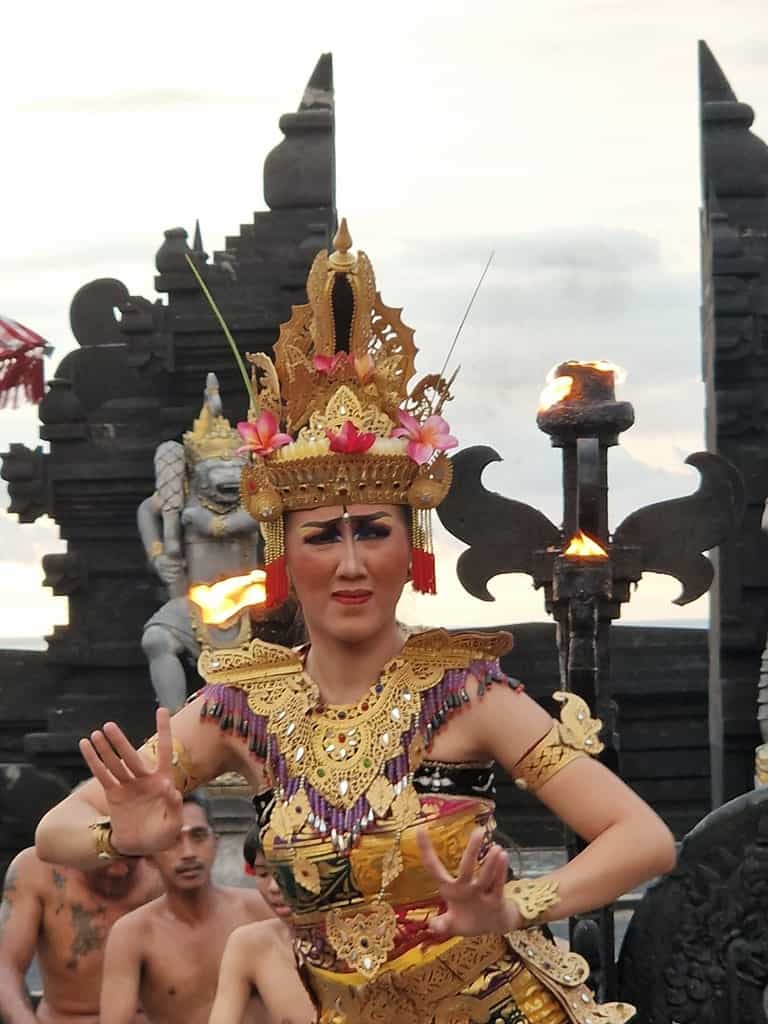
Opening times of the Uluwatu Temple
Uluwatu Temple is open every day from 7 a.m. to 7 p.m.
Entrance Fees for the Uluwatu Temple
The entrance fee for an adult is 30,000 RP (15,000 RP for children).

